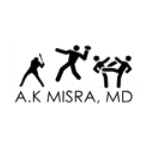Health Tips brought to you by U.S. HealthWorks Medical Group. Our experienced medical experts provide information here that we hope will broaden your health care knowledge.
Today we talk to Dr. A.K. Misra, a U.S. HealthWorks doctor in South San Francisco, about the health risks of going barefoot. Dr. Misra is double-board certified in Sports Medicine and Internal Medicine.
Many people are still going barefoot as summer winds down. But what are the health consequences of not wearing shoes? As with most things, there are tradeoffs in going barefoot as opposed to wearing shoes. We will explore this topic in a Q&A.
Q: What are the health risks of abandoning shoes in favor of going barefoot?
A: Footwear usually affords at least some layer of protection against the potential for wounds and trauma. However, it is important to know that wearing footwear doesn’t provide a perfect impenetrable vernier of protection, which unfortunately many do not understand.
Inappropriate choices of footwear in certain types of terrain can result in a false sense of security, and potentially dangerous wounds may occur.
One of the most ominous types of infections is from a bacteria called Pseudomonas, which can occur, for example, when a nail punctures wet footwear and then penetrates the skin. This is a very serious matter that requires an evaluation in a time-sensitive fashion at the nearest health care facility, such as a U.S. HealthWorks urgent care center.
Note that any wound in a diabetic is always a danger and must be taken seriously. Without treatment, very bad outcomes like ascending infection or amputation may result.
Q: Walking barefoot often results in new and unexpected pain in different parts of the feet and legs. How can people avoid these pains, but still walk barefoot in the home and outdoors?
A: When people with an active lifestyle switch to barefoot walking, problems can arise. Walking barefoot results in the engagement of muscles in the leg compartments that often are not highly engaged when wearing conventional footwear. Thus, participating in a physical activity while barefoot (walking, jogging running), may cause one to experience sore muscles in their legs, particularly in the calves.
Q: Are there any treatments or exercises that will alleviate foot and leg pain from walking barefoot?
A: The best advice for prevention of sore muscles in the legs and feet is to increase lower extremity physical activity levels in a careful, graduated manner when transitioning to barefoot.
Sports Medicine physicians often see these kinds of complaints and concerns more acutely in marathon runners who have transitioned to “glove shoes,” like Vibram. The rest of the shoe/footwear industry has taken notice of this demographic/market and more versions are available today from many different companies.
Often, the treatment of new onset pain is first to stop the offending activity – running, prolonged jogging/walking – and to then engage in rehabilitative care such as soft tissue modalities, appropriate ice application, and a home exercise and stretching program.
Q: I’ve heard that it’s very normal for people to walk barefoot and it’s better health-wise than wearing shoes. Is this true?
A: Yes. It is more consistent with our evolutionary history to be barefoot, dating back to our transitioning from bipedal mammals to Cro-Magnon man, to our current form as a human species. Footwear of any kind is a relatively new phenomenon that mainly came out of necessity for protective purposes against injury only, and wasn’t done for comfort and certainly not for fashion purposes.
Most of our human history was indeed spent barefoot and there are several schools of thought that we are missing out on health benefits we would be getting by having our skin touch soil, sand, clay, and other natural surfaces because certain earth minerals can be absorbed via the skin.
Additional information can be found in this thought-provoking piece: The Surprising Health Benefits Of Going Barefoot.
Photos by Jacob Lund (featured image) and Sunti/Shutterstock.








